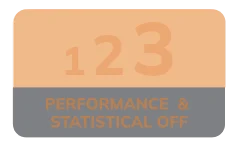THE
ORANGE
HUB
Know About Overdraft Facility in Current Account

As a business owner, you have to be prepared for financial ups and downs that come your way. To make managing cash flows easy, banks in India offer a feature called an Overdraft on your Current Account. Read this blog post to know everything about the Overdraft feature of a Current Account.
Understanding the Overdraft Facility
An Overdraft is an important feature of a Current Account. With an Overdraft, you can withdraw more money than you have in your Current Account, up to a certain limit. It can be understood as a short-term loan given by your bank to cover important business expenses, giving you access to extra funds when your balance runs low.
Key Features of an Overdraft
Overdraft Limit
The first important feature is the Overdraft Limit. This refers to the maximum amount your bank allows you to withdraw from your Current Account above the available balance. ICICI Bank offers an Overdraft on your Current Account up to ₹ 25 lakh so that you can cover various important business costs without delays.
Interest Only on Used Amount
When you avail an Overdraft, the bank charges interest only on the amount you use from your Overdraft Limit and for the time it is used, rather than on the total credit limit available. This is economical since you are not paying interest on the funds that remain untouched.
Short-Term Solution
The Overdraft facility is meant to cover temporary cash shortages. It helps you handle short-term liquidity issues like urgent payments or delayed receivables, but it should not be used as a substitute for long-term loans or capital investment.
Flexible Repayment
Unlike traditional loans, the Overdraft facility does not come with fixed monthly repayments in the form of EMIs. You can repay the interest on the due date while the principal can be paid at your convenience or when you have extra funds. However, banks may occasionally require partial or full repayment based on your usage.
How Does the Overdraft Facility Work?
Let us understand the Overdraft feature with an example. Suppose your Current Account has a balance of ₹ 10,000 and you have an approved Overdraft Limit of ₹ 1,00,000. If you need to pay ₹ 50,000 to a vendor, the overdraft feature allows you to complete the transaction. You will be charged interest only on the overdrawn amount until you repay it.
Benefits of an Overdraft for Your Business
1. Better Cash Flow Management
The most significant benefit of an Overdraft is that it helps you manage cash flows smoothly. Whether it's a delayed client payment or an unexpected bill, the Overdraft ensures that your operations don't stop.
2. On-Demand Working Capital
You don’t always need a full-fledged loan. An overdraft provides funds only when you need them and only as much as you need. It acts as on-demand working capital, which is especially useful during seasonal demand or inventory stocking.
3. Emergency Support
Sudden expenses can hit hard. Equipment repair, urgent supplies or temporary staff hiring– whatever the situation, an Overdraft gives you the breathing room to manage it.
4. Flexibility in Usage and Repayment
There are no fixed instalments for repayment of an overdraft, unlike traditional loans. You borrow what you need and repay when you can. This flexibility makes it an ideal tool for short-term financial balancing.
5. No Need for Repeated Approvals
Once approved, you can access the Overdraft multiple times without reapplying. It saves time and paperwork and helps you act quickly when financial needs arise.
Things to Keep in Mind before Using an Overdraft
Below are some important things to remember when you want to use an Overdraft:
Understand the Interest Rate: Before using the Overdraft facility, it is essential to know the interest rate your bank will charge. Interest applies only on the amount used and for the time it is used. Calculating the potential cost in advance helps in better planning.
Use Wisely: An Overdraft should not become a regular source for daily business needs. It is best used for emergencies, unexpected delays in receivables or urgent purchases. Using it too often can lead to high interest costs and financial stress.
Monitor Usage: Keep a close check on how much of your Overdraft Limit you have used. The more you overdraw, the more interest you pay. Set reminders to repay the amount quickly and avoid prolonged use as it can lead to increased charges.
Review Terms Regularly:Your bank may revise the Overdraft Limit, interest rate or other terms based on your account usage and repayment behaviour. Stay updated with any changes in terms to avoid surprises and ensure continued eligibility.
Conclusion
The Overdraft feature of your Current Account can be a game-changer, especially if have to deal with unpredictable cash flows. It acts as a financial cushion and provides the flexibility that traditional loans often lack. Whether it's covering urgent payments, seizing a business opportunity or simply staying afloat during tough times, this feature ensures that your finances remain under control.
However, like any credit facility, it must be used wisely. Understand the terms, track your usage and keep an eye on interest costs. With responsible use, an Overdraft can become a valuable part of your business financial toolkit.
T&C
For disclaimer, Click Here
Scroll to top









